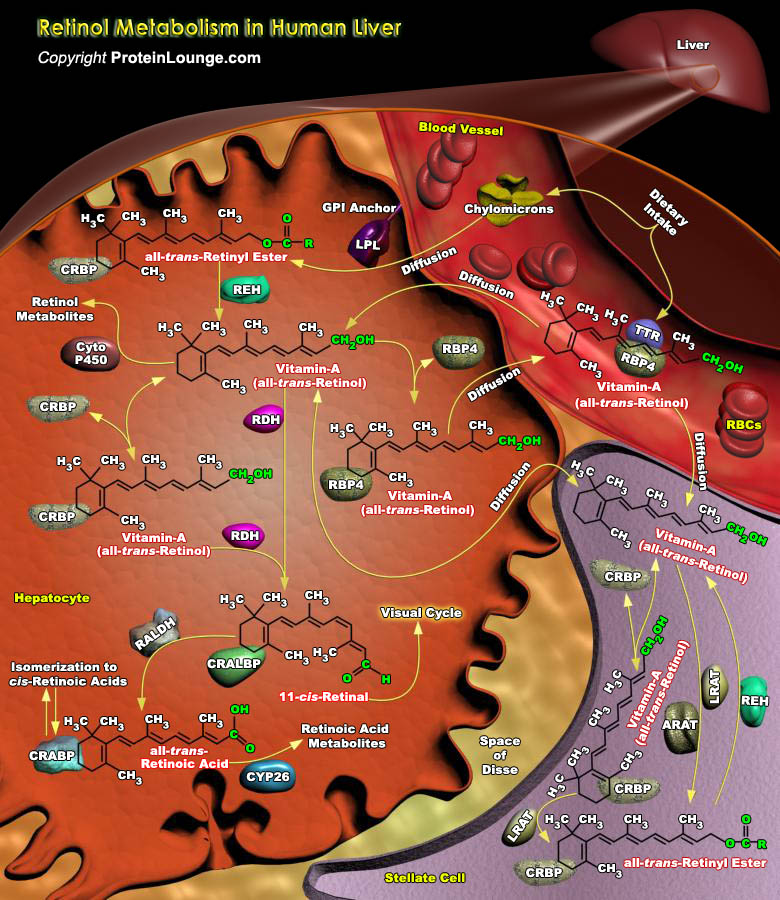
Vitamin-A (all-trans-Retinol), one of the essential micronutrient in the human is obtained chiefly in form of Retinyl Esters from meat, and Carotenoids, such as Beta-Carotene, from plant tissue. Beta-carotene and other Carotenoids are converted by the body into Retinol and are referred to as Provitamin-A Carotenoids. Hundreds of different Carotenoids are synthesized by plants, but only about 10 percent of them are Provitamin-A Carotenoids (Ref.1). The main site for synthesis and storage of Vitamin-A is in the liver. The pRBPs (Plasma Retinol-Binding Proteins) and Ttr (Transthyretin) facilitate the transfer of insoluble Vitamin-A between tissues, principally from storage sites in the liver to peripheral tissues. In the absence of pRBPs and Ttr the supply of Vitamin-A to[..]
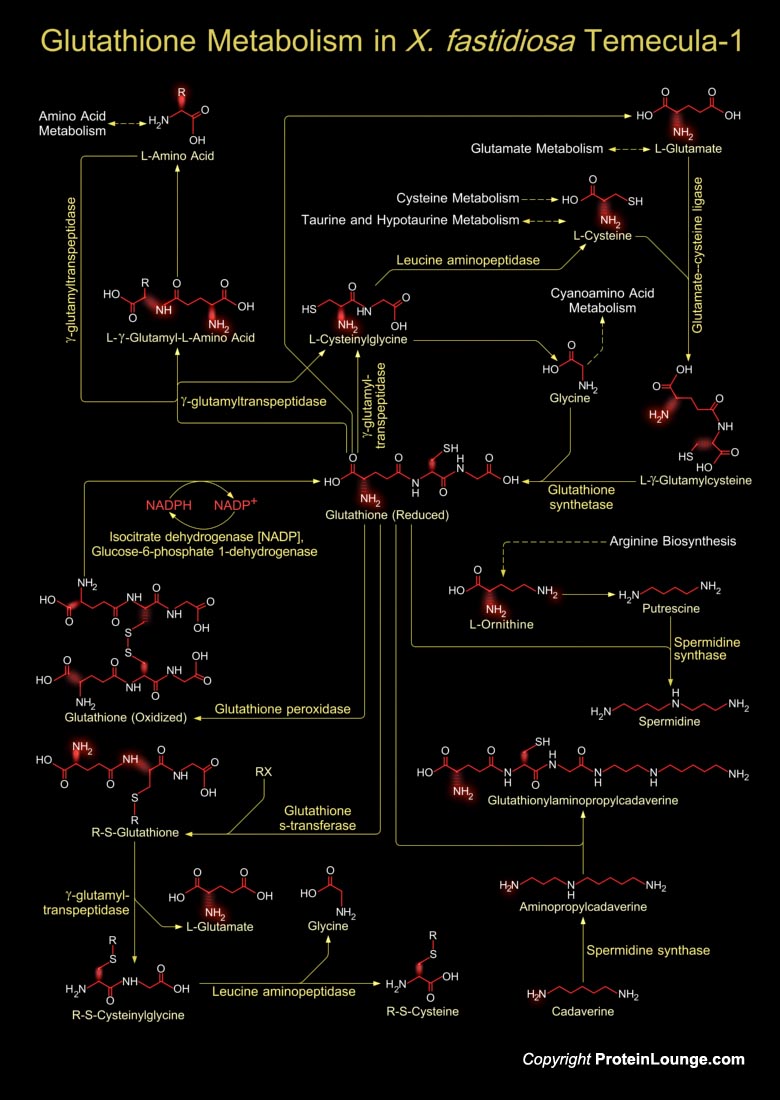
Xylella fastidiosa is a Gram-negative, fastidious, xylem-limited bacterium that causes a range of economically important plant diseases. It causes citrus variegated chlorosis-a serious disease of orange trees. It is responsible for pathogenicity and virulence involving toxins, antibiotics and ion sequestration systems (Ref.1 & 2). X. fastidiosa Temecula-1 is 2.52MB. It is isolated from a naturally infected grapevine with Pierce's disease in a wine-grape-growing region of California. This disease is characterized by wilted, shriveled, raisin-like fruits and scorched leaves that detach, leaving bare petioles attached to the canes. This devastating disease is a major threat to the viability of the California wine industry (Ref.3).Glutathione is a tripeptide[..]
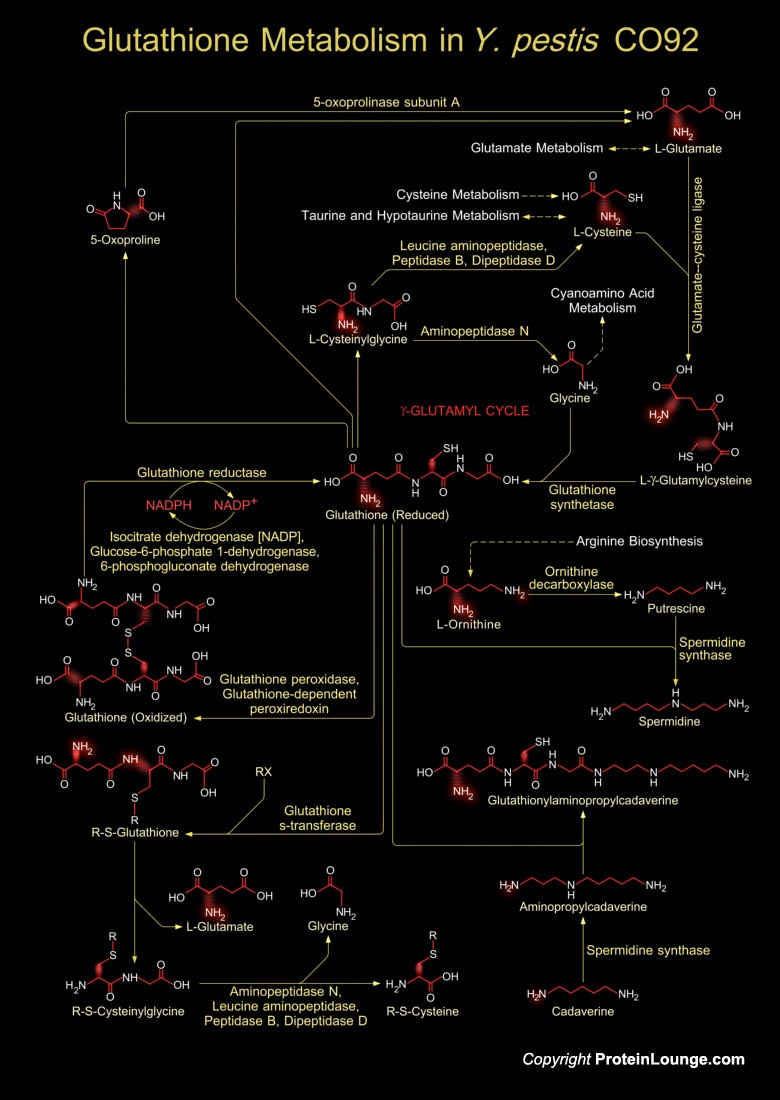
Yersinia sp. is responsible for disease syndromes ranging from gastroenteritis to plague. Y. pestis is categorized into three subtypes or biovars; Antiqua, Mediaevalis, and Orientalis, each associated with a major pandemic. Y. pestis strain CO92 belongs to biovar Orientalis that are responsible for the current pandemic (modern plague). Glutathione is a tripeptide present in Yersinia sp., which is composed of Glutamate, Cysteine and Glycine, and has numerous important functions within cells. The tripeptide is the thiol compound, present in the highest concentration in all types of cells (Ref.1).Glutathione metabolism in Y. pestis involves both the synthesis of Glutathione and its catabolism. Glutathione biosynthesis starts from 5-Oxoproline (OP) the lactam of[..]
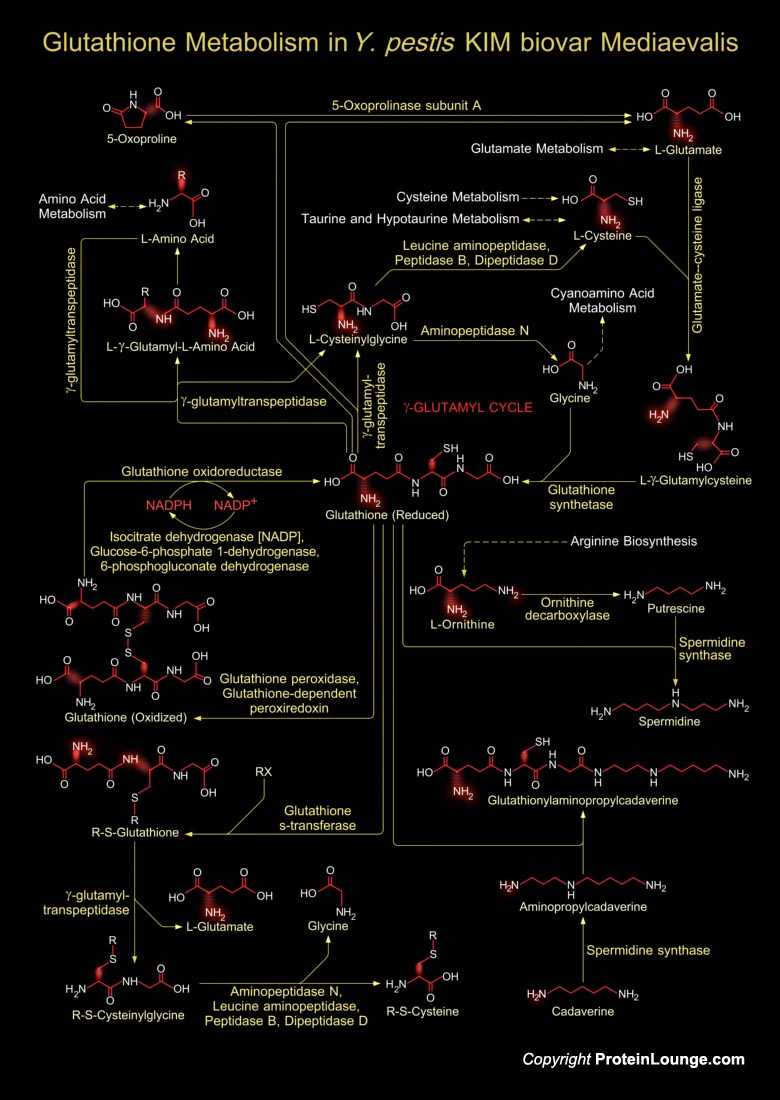
Glutathione is a tripeptide present in Yersinia sp., which is composed of Glutamate, Cysteine and Glycine, and has numerous important functions within cells. Yersinia sp. is responsible for disease syndromes ranging from gastroenteritis to plague. Y. pestis is categorized into three subtypes or biovars; Antiqua, Medievalis, and Orientalis, each associated with a major pandemic. The strain Y. pestis KIM belongs to biovar Mediaevalis and is associated with the second pandemic, including the Black Death (Ref.1).Glutathione metabolism in Y. pestis involves both the synthesis of Glutathione and its catabolism. Glutathione biosynthesis starts from an L-Amino acid, which in presence of the enzyme Gamma-GT (Gamma-Glutamyltranspeptidase) forms L-Gamma-Glutamyl-L-Amino acid and[..]
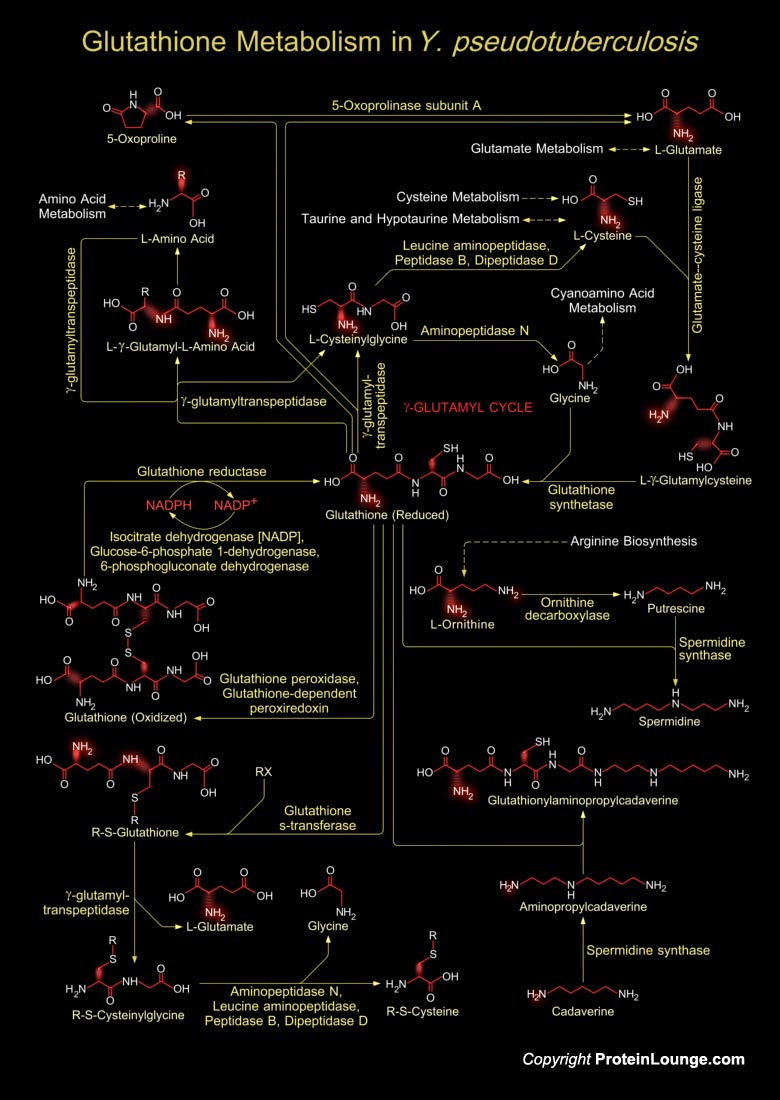
Yersinia sp. is responsible for disease syndromes ranging from gastroenteritis to plague. Y. pestis is categorized into three subtypes or biovars; Antiqua, Mediaevalis, and Orientalis, each associated with a major pandemic. Yersinia pseudotuberculosis is the least common of the three main Yersinia species to cause infections in humans. It is primarily a zoonotic infection with variable hosts, including domestic and sylvatic animals. The condition has been associated with food-borne infection, including a few outbreaks. The organism primarily leads to a gastroenteritis (diarrheal component uncharacteristic) characterized by a self-limited mesenteric lymphadenitis mimicking appendicitis. Postinfectious complications include erythema nodosum and reactive arthritis. Thus,[..]
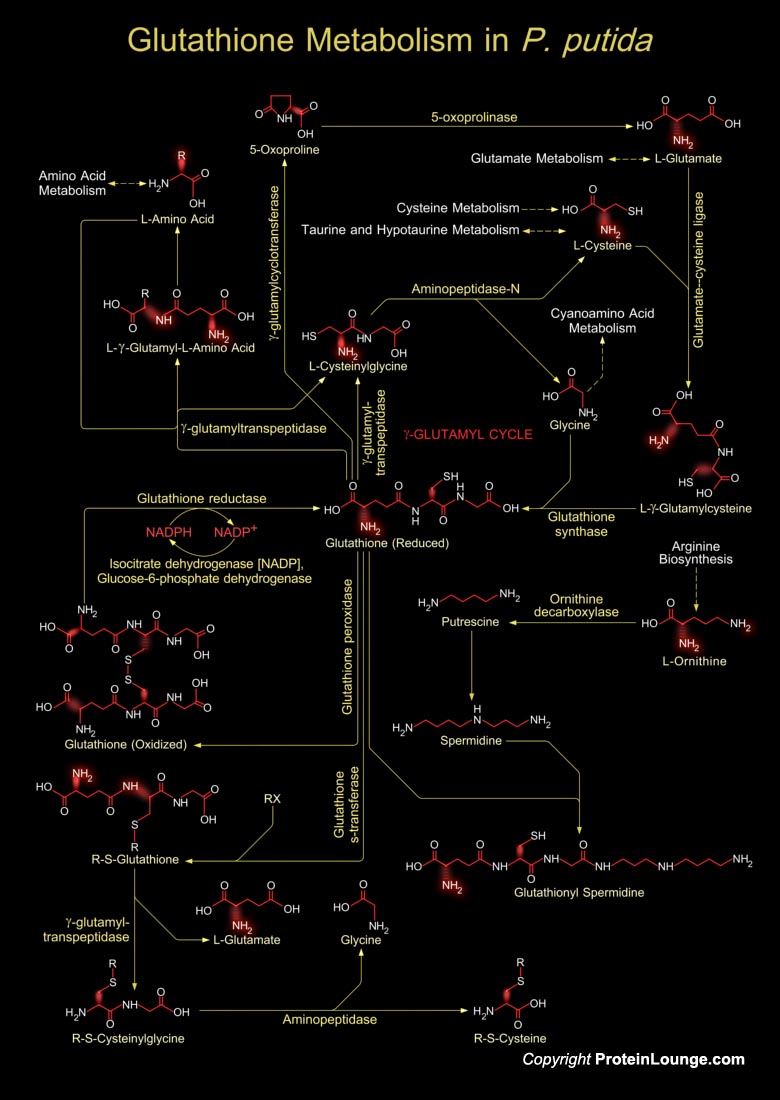
Pseudomonas putida is a Gram-negative, rod-shaped, saprotrophic soil bacterium (Ref.1). It has been reported as opportunistic human pathogens capable of causing nosocomial infections. P. putida exhibits an amazing ability to metabolize a wide range of biogenic and xenobiotic compounds (Ref.2). As a frequent inhabitant of sites polluted with toxic chemicals, P.putida can tolerate high levels of endogenous and exogenous oxidative stress. It is equipped with the enzymatic machinery needed to catabolism both natural and recalcitrant aromatic compounds besides sugars and organic acids. Thiols play several roles in bacteria like maintaining the redox balance, quenching ROS and nitrogen reactive species, and detoxifying other toxins and stress-inducing factors. In[..]
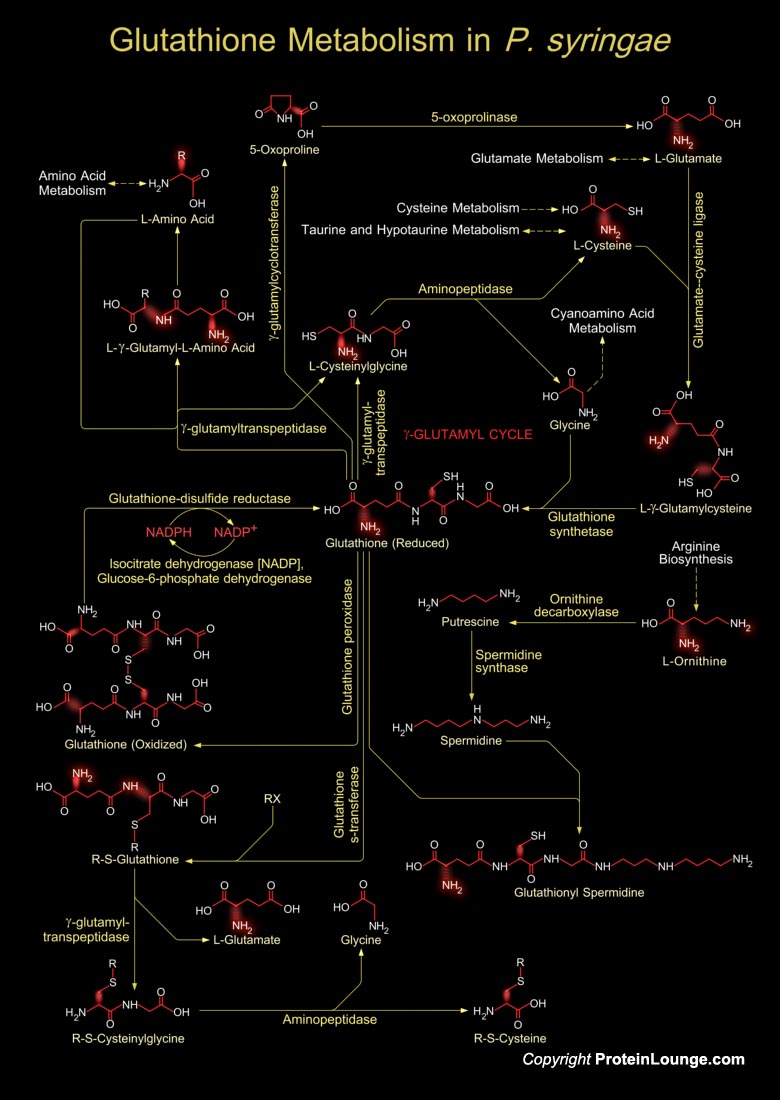
Pseudomonas syringae is one of the best studied plant pathogen with more than 50 pathovars. Each pathovar is known to infect a characteristic group of host plant species (Ref.1). P. syringae is a Gram-negative bacterium and its different strains are known for their diverse interactions with plants. Among these strains, P. syringae pv. tabaci is a non-host pathogen of Arabidopsis thaliana (Ref.2). P. syringae survives saprophytically on the plant surface, and after the entering plant tissues through wounds or natural openings (such as stomata), it reproduces endophytically in the apoplastic space (Ref.3). P.syringae has evolved two principal virulence strategies which are a) suppression of host immunity b) creation of an aqueous apoplast (Ref.1). To survive both in the[..]
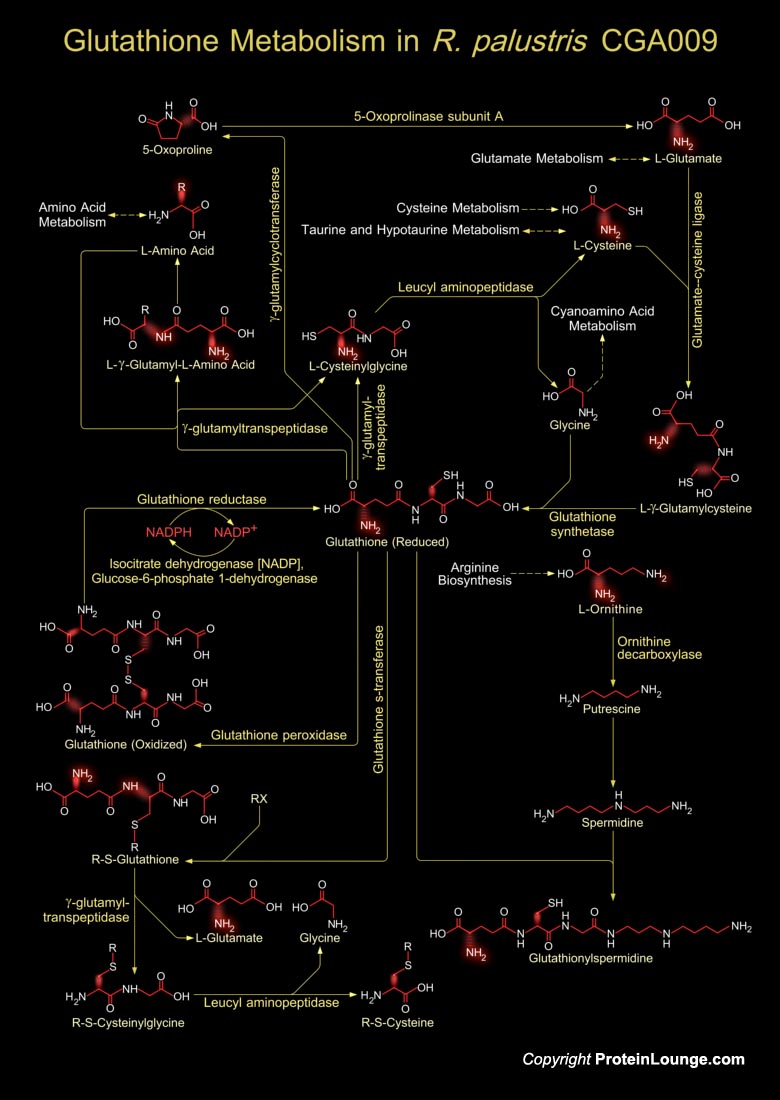
Rhodopseudomonas palustris is a rod-shaped, Gram-negative purple nonsulfur bacterium. It is an alphaproteobacterium that serves as a model organism for studies of photophosphorylation, regulation of nitrogen fixation, production of hydrogen as a biofuel, and anaerobic degradation of aromatic compounds. This bacterium is able to transition between anaerobic photoautotrophic growth, anaerobic photoheterotrophic growth, and aerobic heterotrophic growth. It is found in terrestrial soil and water environments and grows phototrophically under anaerobic conditions. Under such conditions, it uses light as a source of energy and either organic compounds or carbon dioxide as carbon sources. R. palustris also grows aerobically as a heterotroph, and some strains grow anaerobically[..]
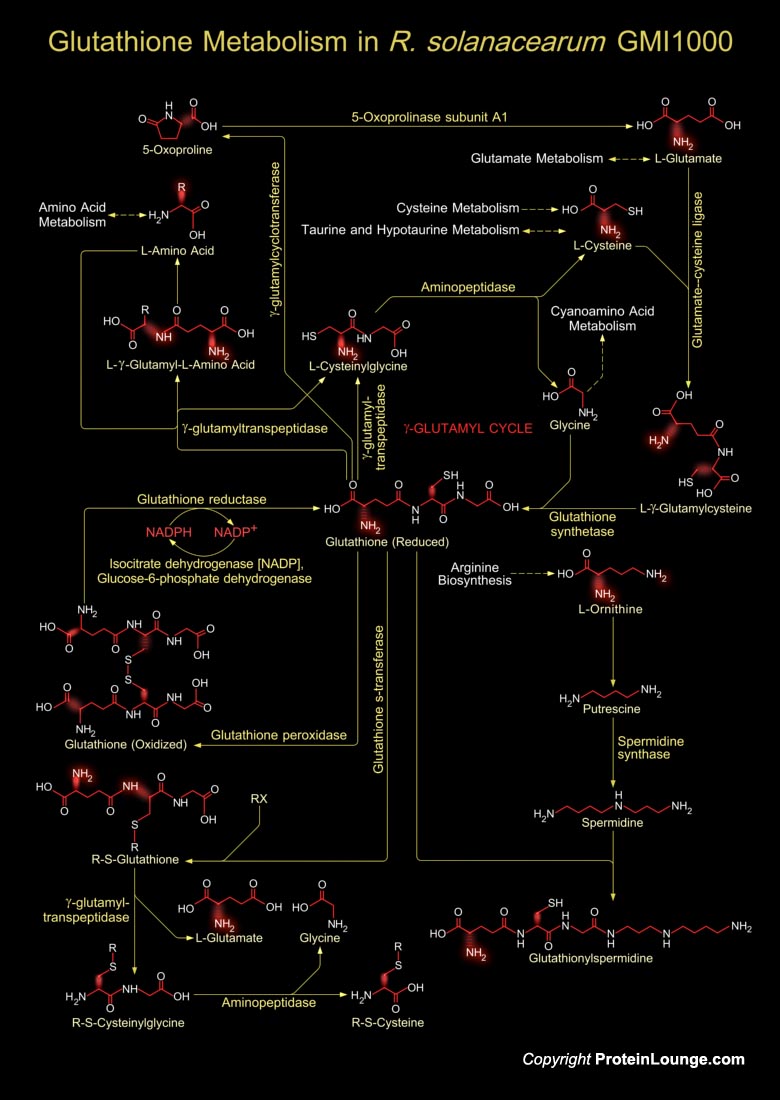
Ralstonia solanacearum is a Gram negative β-proteobacteria. It is an aerobic non-spore-forming, Gram-negative, plant pathogen. R. solanacearum is soil-borne and motile with a polar flagellar tuft. It colonises the xylem, causing bacterial wilt in a very wide range of potential host plants (Ref.1). Although R. solanacearum is considered a plant pathogen, it mainly behaves as a soil bacterium of saprophytic life with an extremely versatile lifestyle, which allows the bacteria to survive in the soil for long periods in the absence of its host plant his phytopathogen invades the vascular tissue in a systemic way and has a wide range of hosts with arge geographic distribution and diverse pathogenic behavior. R. solanacearum can live for long periods in[..]
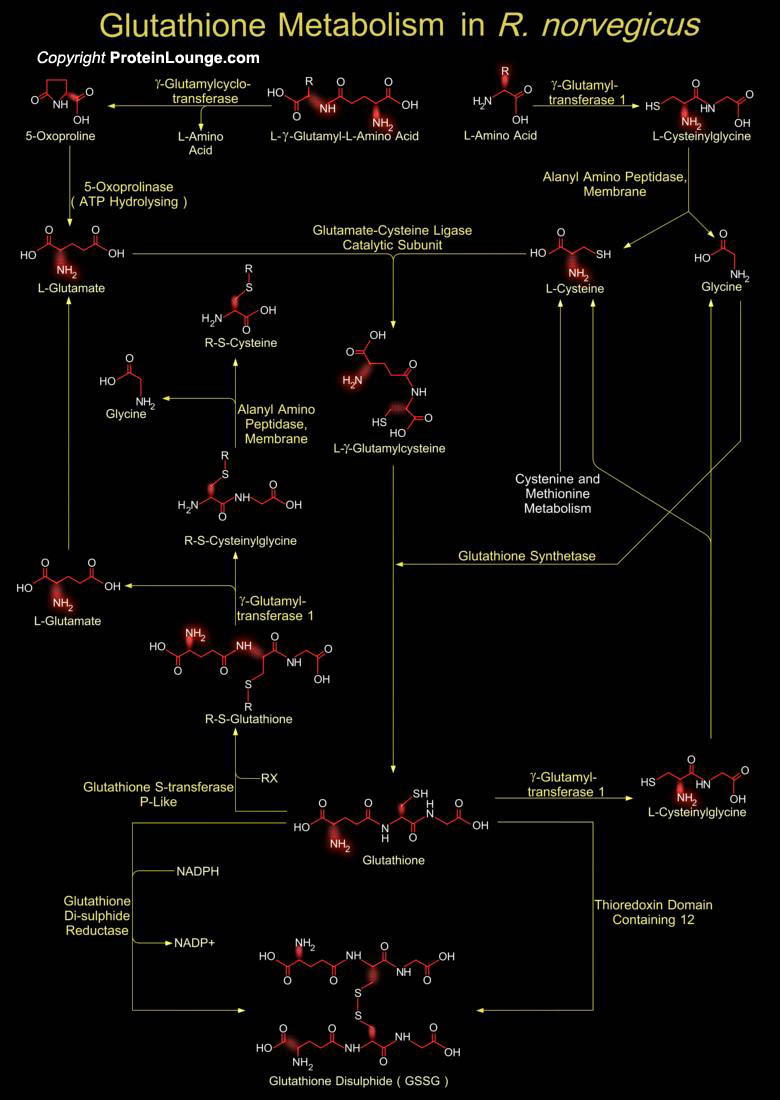
Glutathione is a sulfhydryl (-SH) antioxidant, antitoxin, and enzyme cofactor. It is ubiquitous in animals, plants, and microorganisms, and being water soluble is found mainly in the cell cytosol and other aqueous phases of the living system. Glutathione is composed of Glutamate, Cysteine and Glycine that has numerous important functions within cells. The tripeptide Glutathione is part of an integrated antioxidant system that protects cells and tissues from oxidative damage. Oxidative stress can result from exposure to excessive amounts of endogenous and exogenous electrophiles (Ref.1). Glutathione exists in two forms. The antioxidant "reduced Glutathione" tripeptide is conventionally called Glutathione and abbreviated GSH; the oxidized form is a[..]
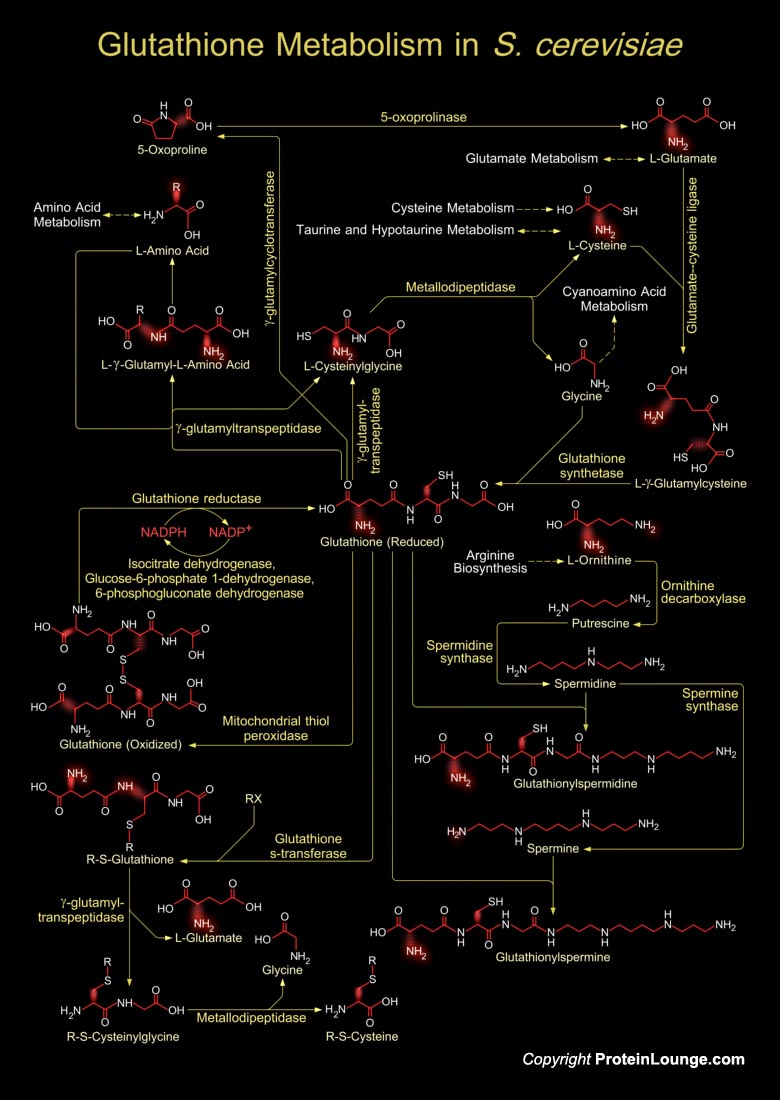
Saccharomyces cerevisiae (S. cerevisiae) is a unicellular fungus, possessing a nuclear genomic DNA of 12068 kilobases (kb) organized in 16 chromosomes. Its genome has been completely sequenced by Goffeau et al. 1996 and was found to contain approximately 6000 genes, of which, 5570 are predicted to be protein-encoding genes. S. cerevisiae has been an essential component of human civilization because of its extensive use in food and beverage fermentation in which it has a high commercial significance. S. cerevisiae is involved in the production of many fermented beverages, such as wine, beer and cider; distilled beverages, such as rum, vodka, whisky, brandy, and sake; whereas in other alcoholic beverages worldwide, from fruits, honey, and tea (Ref.1). During the[..]
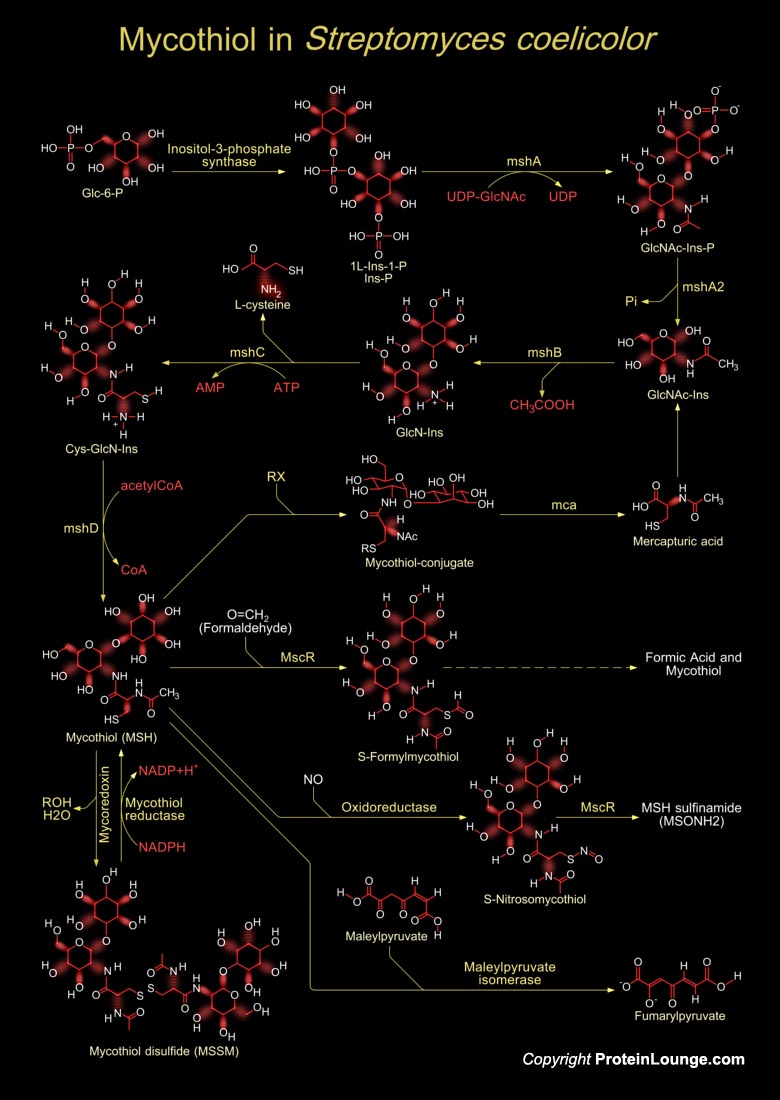
Streptomycetes are soil dwelling, Gram-positive, GC-rich bacteria belonging to the class Actinobacteria. They have a unique capacity to produce novel bioactive compounds and are the most known to produce metabolites like antibiotics, immunosuppressants, antivirals and herbicides. Filamentous Streptomyces bacteria produce bioactive secondary metabolites that account for more than half of all known antibiotics as well as anticancer, anti-helminthic and immunosuppressant drugs (Ref.1). Streptomycetes starin Streptomyces coelicolor is amongst the best studied representatives of the genus Streptomyces, which is the largest genus within the Actinobacteria. Streptomycetes have a remarkably complex developmental life cycle and the capacity to produce a plethora of natural[..]

